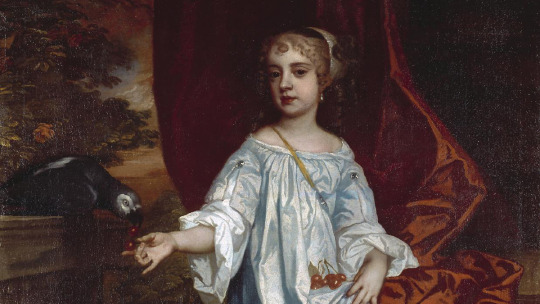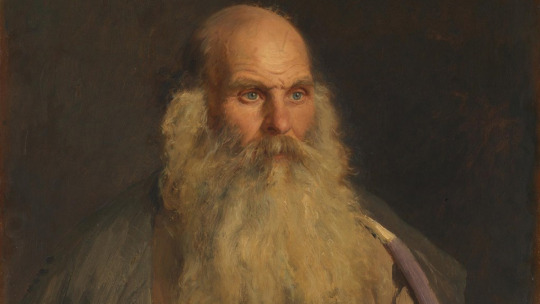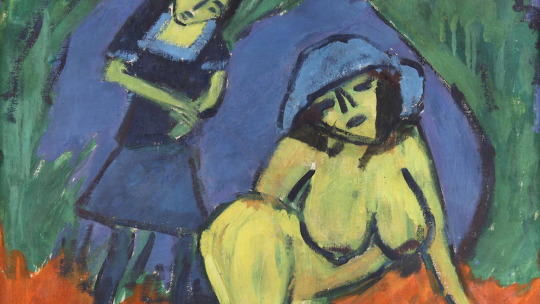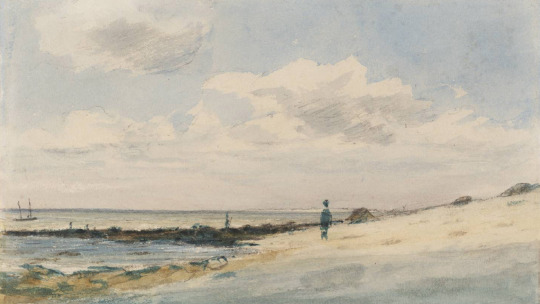Photo

Lely, Girl with a Parrot (ca. 1670) oil on canvas, 124,5 x 101,6 cm, The Tate.
8 notes
·
View notes
Text
ARTIST BIRTHDAY - SIR PETER LELY (14 SEPTEMBER)
Lely spent most of his life in England but was born in the Netherlands in 1618. There are only a few known works done by Lely before he came to England. They are mostly landscapes or genre paintings. Lely’s family name was van der Faes. The name Lely is said to have come from a lily was carved on his family’s home in The Hague.
Lely’s timing in his move to England was impeccable. His chief competitors as portrait painters—van Dyck and Dobson—were dead or dying. Another competitor, Cornelius Johnson, had moved back to the Netherlands.
Lely was successful as a portrait painter. Among his first patrons were the earls of Pembroke, Salisbury and Leicester. By 1650, he had bought a house near Covent Garden, London, where he stayed for the rest of his life.
Lely was appointed Principal Painter to King Charles II in 1661. This meant he was entitled to an annual pension. Unfortunately, payment was often significantly late. Nevertheless, Lely indulged in extravagences. Samuel Pepys in his Diary called Lely “a mighty proud man,” and detailed Lely’s luxurious life style. Lely died in debt.
Lely was naturalized in 1662. His later patrons included ancient royalist families such as the Somersets. Lely was knighted in early 1680.
Lely had formal, academy training in draftsmanship during his youth in the Netherlands. Such training in drawing was unusual in England at time. Scholars believe that part of the motivation for Lely’s collection of drawings was to learn from them and to teach from them. Lely never traveled to Italy to see the work of the masters. Instead he was exposed to them through his collection. Lely probably used his collection of drawings as examples for his studio assistants to follow.
Lely’s services were in demand so he hired several studio assistants. Some of Lely’s assistants became important artists, for instance, Nicholas de Largilliere. Lely usually painted the head of a sitter himself from life. Assistants painted the clothing and background. Sometimes patrons questioned Lely about how much of their portrait was actually done by Lely himself.
There are a total of thirty-one drawings in the series on the procession of the Order of the Garter. Scholars believe these were not commissioned and were occasioned by Lely witnessing the procession himself.
Lely was one of the major art collectors of his time. His collection was particularly strong in Italian, Flemish and Dutch works. Lely probably was an art dealer as well as a collector. Art historians believe Lely worked with a Dutch partner to sell the paintings he collected.
Lely died at his easel in 1680. It took his executors eighteen months to assemble and organize Lely’s collection to pay his debts. There were two estate sales. In addition to his own paintings, and those by other artists, Lely had 7,000 prints and 3,000 drawings in his collection.
#sirpeterlely #peterlely #lely
https://www.artexpertswebsite.com/sir-peter-lely/
2 notes
·
View notes
Photo

Repin, Study of an Old Man (1878), Oil on canvas, 88.5 x 68 cm, National Gallery, London.
2 notes
·
View notes
Text
ILYA YEFIMOVICH REPIN
Repin was born in 1844 in Chuguyev, Kharkiv. Ukraine. Repin’s father was a military officer. Repin first studied at an icon-painting school. Repin moved to St. Petersburg in 1853, where he trained at the Drawing School of the Society for the encouragement of Artist. Then he studied at the Academy of Art, through which he met like-minded visual artists, writers, theatre-people, and other members of the St. Petersburg intelligentsia. One of these was the composer Modest Mussorgsky.
He created one of his most iconic works while studying at the Academy: Volga Boatmen (1870-3; State Russian Museum, St. Petersburg). The Russian art critic Vladimir Stasov said of the painting, “It is a human mosaic from all corners of Russia.”
Repin won the Academy’s Grand Gold Medal, which permitted him to travel outside Russia for the first time in his life. He traveled to Italy and Austria in May 1873. Repin lived in Paris from 1873 to 1876. He was exposed to the Impressionists and painted en plein air in the French countryside.
In the summer of 1876, Repin went back to St. Petersburg. Then shortly afterward, returned to the city of his birth in Ukraine. Repin hoped to spark a spiritual and cultural revival in Chuguyev. He reconnected with his friends and family and was inspired by rural life, but moved to Moscow after five years.
Among those he met while living in Ukraine was the collector Pavel Tretykov, who became his life-long friend and patron. During the late 1870s, Repin acquired a country home near Moscow—Abramtsevo. He had a large group of friends who were writers and artists, one of whom was Leo Tolstoy. He met Anton Chekhov whom Repin said, “took pleasure in feeling that he was clad in ‘the armor of courage.’”
Repin joined the spiritual group The Wanderers in 1878 and exhibited with them. Repin moved to St. Petersburg in 1882. His popularity rose throughout the 1880s.
Repin painted many subjects from Russian history. On his painting, Ivan the Terrible and His Son Ivan on 16 November (1885) Repin said: “the bloody events of March 1, upset everyone. A kind of bloody streak went through this year… I worked like a madman. At the time, I was terrified.”
Repin was an accomplished and influential portrait painter. He painted Leo Tolstoy’s portrait, as well as those of the composers Nikolay Rimsky-Korsakov, Aleksandr Borodin, and Modest Mussorgsky.
He taught at the St. Petersburg Academy of Art, and had private students. Repin was a life partner of the artist Natalija Borisovna Nordman-Severova (1863-1914).
Repin lived the last thirty years of his life in his renovated house with studio at Kuokkala. Nordman-Severova lived with him. The house became Finnish territory in 1917. Maxim Gorky and other important Russian cultural figures visited him there. He died there at the age of eighty-eight in 1930. After World War II, the area where the house is located was again Russian. The house became the Repin Museum.
#ilyayefimovichrepin #repin
https://www.artexpertswebsite.com/ilya-yefimovich-repin/
0 notes
Photo

Heckel, Kind und nackte(1910) Oil on canvas, 69 x 80 cm, private collection.
1 note
·
View note
Text
ERICH HECKEL
Heckel was born in 1883 in Döbeln near Dresden, Germany. As a child he met Karl Schmidt-Rottluff in Chemnitz.Heckel originally set out to become an architect and studied in Dresden at the Technische Hochschule. Through his brother Manfred Heckel met Ernest Ludwig Kirchner.
Along withanother self-taught artist Fritz Bleyl, Heckel, Kirchner and Schmidt-Rottluff founded Kunstlergruppe Brücke in June 1905. All four were architecture students. Heckel worked as a draftsman and project manager for an architect for a few years after the founding of Die Brücke
Die Brücke saw itself as a bridge from the past to the present. They wanted to break through the boundaries they felt were holding back art. Heckel and the other members of Die Brücke believed themselves to be artistic innovators. They valued authenticity, candor, and advocated a youth movement.
The members of Die Brücke considered woodcuts the pre-eminent medium. They believed woodcuts were an ancient and indigenous German art form fundamental to German artistic expression.
Die Brücke held its first group exhibit in 1906. Their work was popular and they had many more exhibits in rapid succession. Many of these shows took on an ideological character.
Heckel took onthe role ofhead of communications for Die Brücke,and was the organizer and manager of the group’s activities.
Die Brücke favored the use of two-dimensions and vivid colors. They saw aBerlin exhibit of work by Henri Matisse in 1908, which profoundly affected them.They considered asking Matisse and other Fauves to join Die Brücke.
It was part of Die Brücke’s philosophy to create works collaboratively. Heckel often worked with Kirchner and Max Pechstein on summer vacations at the Moritzberger Lakes.
In 1911, Kirchner, Bleyl and Heckel moved to Berlin.In Berlin, Die Brücke met and mixed with members of other avant-garde German art groups.
During World War I, Heckel was a volunteer for military service. He was deployed to a medical division, in which the artist Max Beckmann also served, and for which the chiefofficer was the art historian Walter Kaesbach.In the 1920s, Heckel joined the Novembergruppe. During this time, Heckel helped establish Arbeitstrat für Kunst.
During World War II, Heckel’s work was labeled “degenerate.” He abandoned Berlin and sought refuge in Carinthia.After World War II, Heckel went back to Berlin but found his studio destroyed. He moved to Lake Constance, where he painted and taught art. In his final years, Heckel created many landscape watercolors. Heckel died in Radofzell near Konstanz in January 1970.
#erichheckel #heckel
https://www.artexpertswebsite.com/erich-heckel/
0 notes
Photo

Torres Garcia, Street Scene (1920-22), 99,4 x 81,3 cm, Museum of Modern Art, New York.
1 note
·
View note
Text
JOAQUÍN TORRES-GARCIÁ
Torres-Garciá was born in Montevideo, Uruguay in 1874, His father was Catalan and the family moved back to Spain when Joaquín was a child. He studied at the Academia Baixas in Barcelona, where he worked with Antoni Gaudi. Torres-Garciá was commissioned to create frescoes in Barcelona’s Saló de Sant Jordi, which is in the Palau de la Generalitat. These stirred controversy. In response to the controversy, Torres-Garciá secluded himself in rural Tarrasa, Spain where he started painting landscapes and street scenes.
Torres Garcia, Nueva York (1920) Ink on paper, 22,5 x 29,5 cm, Museo Nacional Centro de Arte, Reina Sofia.
Torres-Garciá moved to New York in 1920. He exhibited with Stuart Davis at the Whitney. In New York, he not only made and taught art, he started designing toys and established a toy factory. Torres-Garciá and his family went back to Europe in 1922. He was one of the founders of Constructivism. Torres-Garciá and Piet Mondrian established the Constructivist group Cercle et Carré in 1929. They believed there was a fundamental geometry undergirding all forms.
In the early 1930s, Torres-Garciá lived in Spain, exhibiting and lecturing on art theory. After forty-three years away, he went back to Uruguay in 1934. Torres-Garciá created sculptures and installation pieces. He painted murals in Uruguay. Torres-Garciá founded and wrote for various art publications, and introduced to Uruguay’s art the concepts of Constructivism, Cubism and Neo-plasticism.
Torres-Garciá founded an art school in Uruguay, the Taller, which many have likened to Germany’s Bauhaus. It trained many important Uruguayan artists. When he died in 1949 in Uruguay, Torres-Garciá was considered among the most significant Latin American artists of his time.
#joaquintorresgarcia #garcia
https://www.artexpertswebsite.com/joaquin-torres-garcia/
0 notes
Photo

Hopper, Night Shadows (1921) Etching on white wove paper, 175 x 210 mm, The Art Institute of Chicago.
0 notes
Text
Edward Hopper’s birthday is 22 July
Hopper worked as a commercial illustrator for an advertising agency after leaving art school. He then spent a year in Europe, mostly in Paris. Hopper made a a total of three trips to Paris over the course of his life. Hopper had his first public exhibit in 1908. Hopper also exhibited at the 1913 Armory Show.
In 1915, he took up etching. He had been exhibiting paintings in New York, Chicago and elsewhere and hadn’t sold any. Hopper put his canvases into storage. He also started teaching art at his family home in Nyack. In 1916, Hopper bought a printing press.
Throughout the early 1910s, Hopper continued to make the bulk of his income through commercial illustration, but was also selling his etchings.
In 1924, he married Josephine Nivison. She was already an accomplished artist. During their extended honeymoon in Gloucester, MA, Hopper began to experiment with watercolor in earnest.
In 1931, Hopper was among the first artists invited to exhibit at the new Whitney Museum in New York. At that time, the artist Guy Pène du Bois wrote on Hopper, who he said “turned the Puritan in him in to a purist, turned moral rigours into stylistic precisions…He will never himself, in conversation, bother to fill in awkward moments…moments which a more worldly and less strictly honest painter would pad.”
Only very rarely do Hopper’s watercolors have people in them. He painted his final watercolor in 1962, five years before his death. But Hopper continued to sketch and paint oils for the rest of his life. These often included people.
Hopper’s wife Josephine was his only female nude model from the time they married. In 1933, she inherited some money, which allowed the Hoppers to buy a summer home and to travel. The Hoppers did not have electricity, a refrigerator or telephone service in their summer home until 1954.
Hopper disagreed with critics who said his paintings were about human isolation. He said, “The loneliness thing is overdone…It formulates something you don’t want formulated.” Hopper died on May 15, 1967 at his Washington Square apartment. Hopper had lived there since 1913. Josephine, his wife, died ten months later.
#edwardhopper #hopper
https://www.artexpertswebsite.com/edward-hoppers-birthday-is-22-july/
0 notes
Photo

Nicholas Poussin, The Triumph of Pan (c. 1635) pen, ink with wash, over black chalk on paper, 228 x 338 mm, The Royal Collection.
0 notes
Text
Nicholas Poussin
Poussin was born on 16 June in either 1593 or 1594. He established the main tenets of Classicism. Poussin is regarded by many art historians as the best French artist of the seventeenth century.
Little is known of Poussin’s early years. As a child, he saw the work of Mannerist artist Quentin Varin. Poussin wanted to study art and moved to Paris in 1612. He had some early success in Paris, but was eager to see Classical and Renaissance art for himself in Rome. Poussin’s earliest drawings show his interest in Classical Greek and Roman mythology.
Rome finally got to Rome in 1624. He met a group of influential intellectuals in Rome, and won many commission to create art. A particularly important commission was from the poet Marino to illustrate Ovid’s Metamorphosis. Art historians believe that during this early period in Rome, Poussin concentrated on making art for private contemplation rather than grand, public statements. In 1628, Poussin won a commission from the Pope.
In the drawing above, Poussin masterfully depicts a large of group of people in an outdoor space without making it seem crowded. The drawing was a preparatory sketch for the second series called “The Seven Sacraments.” This series was created for Poussin’s patron Paul Fréart de Chantelou.
During his time in Rome, Poussin began to attend dissections and study medieval Arabic mathematics. He started making boxes, which he used to stage the settings of his drawings and paintings. Poussin created figures out of beeswax and moved the figures around a sort of stage set up in the box to change the dynamics of his compositions. The boxes had openings so he could see the how alterations in lighting would affect the scene. Poussin also used live models to stage the scenes he sketched or painted.
Poussin became ill in about 1629. The family of Jacques Dughet, a chef, took care of Poussin during this time. Poussin married Dughet’s daughter. Her brother Gaspard was an important landscape painter. From about 1630 to 1640, Poussin did not take any public commissions. He became more concerned with the depiction of emotions. Poussin returned to Paris in 1640. During this time, he met adherents of Réne Descartes and developed an interest in philosophy and the philosophical underpinnings of art. The followers of Descartes became his patrons and followers. Poussin returned to Rome in 1642.
In the 1640s, Poussin painted more landscapes. Wall paintings from the Roman period were being excavated at this time. The oil-on-canvas paintings Poussin created in this period used the brilliant colors typical of Roman wall paintings. Poussin died in 1665. According to Anthony Blunt, who sparked twentieth century interest in Poussin, Poussin was “ a pure example of the Christian Stoic.“ His art profoundly influenced generations of artists who came after him.
#nicholaspoussin #poussin
https://www.artexpertswebsite.com/nicholas-poussin/
0 notes
Photo

John Constable, Between Folkestone and Sandgate (1833) watercolor and graphite, 11.6 x 18.2 cm, Tate Britain.
0 notes
Text
John Constable
John Constable was born on 11 June 1776 in Suffolk, England. His father owned a mill, and Constable grew up in a family keenly interested in weather conditions. John Constable continued to work at the family mill and on family properties until 1798.
As a child, Constable started sketching in Suffolk and Norfolk. His father allowed him to move to London to pursue art studies when John Constable turned twenty-two years old. Constable started studying at the Royal Academy Schools in 1800.
Throughout the early 1800s, Constable made many trips around England to sketch the scenery and in particular the skies. Constable had been exposed to the landscape paintings of Gainsborough, Girtin, and the Dutch landscape artists, but he started developing his own original take on landscape painting during this period.
Constable completed many watercolor studies of clouds. Most were in sketchbooks. Constable wrote, “It will be difficult to name a class of landscape in which the sky is not the keynote, the standard of scale, and the chief organ of sentiment.”
Scholars believe Constable often sketched hastily outside but brought many watercolors inside to finish. Constable ably depicts the unsettled weather and volatile skies of Sussex in the watercolor above. Constable said, “No two days are alike, nor even two hours; neither were there ever two leaves of a tree alike since the beginning of the world.”
Unlike many British artists, Constable never traveled overseas. His work was appreciated during his lifetime for its originality and freshness. Starting in the twentieth century, many critics praised the spontaneity of Constable’s watercolors and sketches over his finished oil-on-canvas paintings.
#johnconstable #constable
https://www.artexpertswebsite.com/john-constable/
0 notes
Photo

Gauguin, Study for a Fan, after Cézanne (1885), gouache on canvas, 10 7/8 x 21 7/8 inches, Ny Carlsberg Glyptotek, Copenhagen.
1 note
·
View note
Text
Paul Gauguin
Paul Gauguin was born on 7 June 1848 in Paris. His childhood was spent in Peru. Though well-known for his paintings, he was also a sculptor, print-maker. potter, and a master of watercolors and pastels.
This fan was painted while Gauguin lived in Copenhagen from December 1894 to July 1885. In 1881, Camille Pissarro introduced Gauguin to Paul Cézanne. The Cézanne landscape painting after which it is done is at the National Museum of Art in Cardiff, Wales.
In 1881, Camille Pissarro introduced Gauguin to Paul Cézanne. The Cézanne landscape painting after which it is done is at the National Museum of Art in Cardiff, Wales.
Paul Gauguin was married for ten years to a Danish woman, Mette-Sophie Gad. Aline was their second daughter. She was named after Gauguin’s mother and was born on Christmas 1876. Gauguin got some instruction in drawing and watercolor from Camille Pissarro. He could not afford professional models and used his family as sitters.
In 1876, a landscape painting by Gauguin was accepted for exhibition at the Paris Salon. He had been working as a merchant. In 1883, he stopped working in the business world and began to be a full-time artist. Gauguin was unable to sell the paintings he created, but sold his collection of works by Impressionists to support his family.
In 1876, a landscape painting by Gauguin was accepted for exhibition at the Paris Salon. He had been working as a merchant. In 1883, he stopped working in the business world and began to be a full-time artist. Gauguin was unable to sell the paintings he created, but sold his collection of works by Impressionists to support his family.
Gauguin abandoned his family and stayed in Brittany for nine months. It was cheaper than Paris and it had a distinctive culture, then considered exotic.
Gauguin first went to Tahiti in June of 1891. But by 1893, illness and poverty compelled him to return to France. He hoped his work would sell there and held a solo exhibit at Galerie Durand-Ruel in Paris. His work did not sell. He returned to Tahiti in July of 1895. Gauguin continued to produce art until his death in the Marquesas islands in 1903.
#paulgauguin #gauguin
https://www.artexpertswebsite.com/paul-gauguin/
0 notes
Photo

Chéret, Au Quartier Latin (1894) color lithograph, National Gallery of Art, Washington, DC.
0 notes